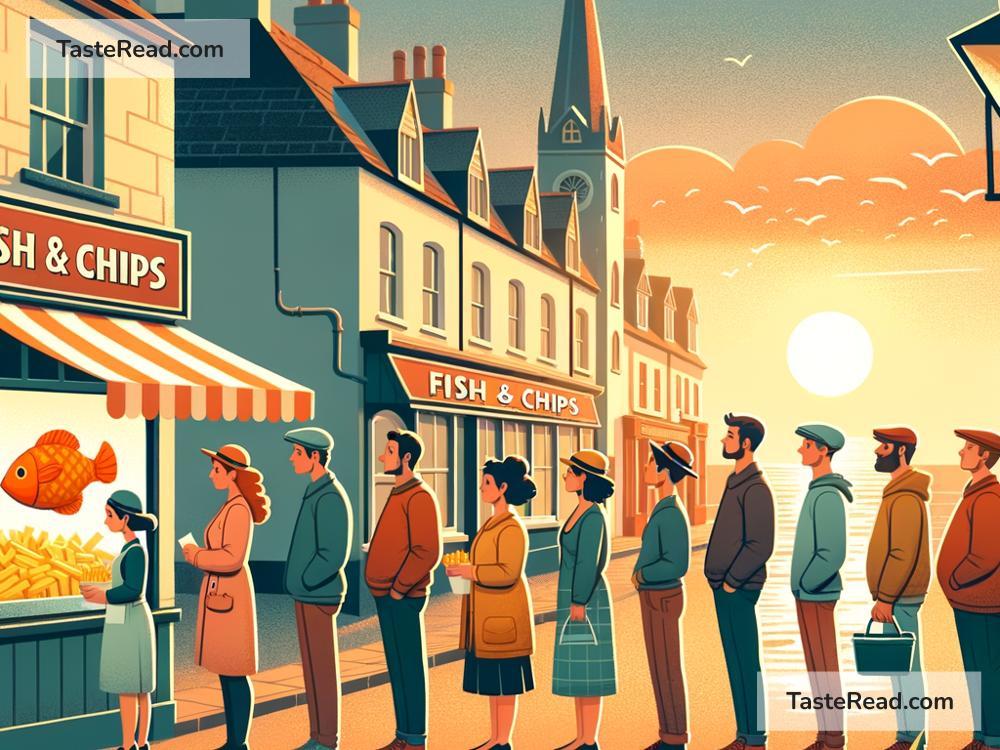Title: How the British Fish and Chips Became a National Treasure
In the heart of British culture, there lies a dish so simple yet so beloved that it has become a symbol of comfort and tradition across the nation. Fish and chips, a simple meal consisting of fried fish and sliced potatoes, has earned its place as a national treasure in the United Kingdom. This dish, which might seem ordinary to the outsider, carries with it a rich history and has been a staple in British society for centuries. Let’s dive into the story of how fish and chips became the iconic British food we know and love today.
The origins of fish and chips can be traced back to the 19th century, during the Industrial Revolution. It was a time of significant change in Britain, with people moving to the cities in search of work, and families needed cheap, hearty meals that could easily be prepared and served. Enter fish and chips. The dish combined two of the most readily available ingredients: fish from the North Sea and potatoes, which had become a staple crop in England. Both ingredients were inexpensive, nutritious, and filling, making fish and chips the perfect meal for working families.
But where did this iconic dish come from? The fried fish part of the meal has its roots in the Jewish community. Jewish immigrants from Spain and Portugal brought the technique of frying fish in batter to England in the 17th century. This method of cooking fish became popular in London and other parts of the country. As for chips, they are believed to have been introduced to Britain from Belgium or France in the 18th century. The combination of fried fish and chips first appeared together in the 1860s. The very first fish and chip shop is thought to have been opened by Joseph Malin in London or by John Lees in Lancashire, depending on who you ask. Either way, the dish quickly gained popularity, and by the 20th century, fish and chip shops, known as “chippies,” were a common sight in towns and cities across Britain.
The appeal of fish and chips goes beyond just its taste and affordability. During both World Wars, fish and chips were among the few foods in the UK not subject to rationing. This ensured the dish’s place in the hearts of the British people, becoming a symbol of good times and resilience in the face of hardship. The meal was seen as a morale booster for families and communities during tough times, a warm and satisfying reminder of home and normalcy.
Fast forward to today, and fish and chips remain a beloved part of British culture. It has survived the test of time, adapting to new trends and dietary preferences while still maintaining its essence. Modern twists on the traditional dish now include options for batter made without gluten, and fish from sustainable sources, catering to a wider audience while keeping the classic flavours intact. Despite these changes, the essence of fish and chips as a communal, comforting dish remains the same. It’s not just about the food but the experience of sharing it with family and friends, whether it’s wrapped in paper by the seaside or served on a plate in a cozy pub.
Moreover, fish and chips have transcended their origins to become a symbol of British identity. The dish represents the fusion of different cultures and the evolution of British society over the centuries. It’s a reminder of the country’s maritime history and its connection to the sea, as well as its adaptability and resilience through changing times.
In conclusion, fish and chips are much more than just a meal; they are a piece of British heritage. From its humble beginnings in the 19th century to its status today as a cherished national dish, fish and chips have captured the hearts and stomachs of the British people. This dish is a testament to the simplicity of good food and the power it has to bring people together. So next time you’re enjoying a plate of crispy, golden fish and chips, remember the rich history and cultural significance behind this beloved British tradition.


